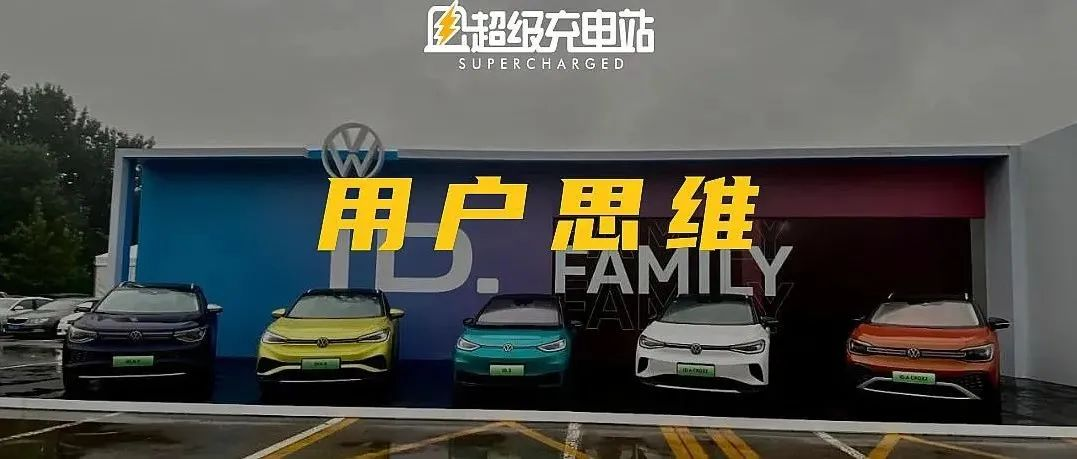The New Energy Vehicles Offensive of Volkswagen in China
Author: James Yang Jianwen
How strong is Volkswagen’s offensive on new energy vehicles in China? Currently, Volkswagen has launched two models in China: ID.4 and ID.6 (each with SAIC and FAW). ID.6 is a special model for the domestic market and later this year the global model ID.3 will be launched.
This means that Volkswagen has already launched three pure electric vehicle models in China this year, all based on an exclusive platform for electric vehicles.
Recently, after a sales lull, the Volkswagen ID. family finally saw an upturn:
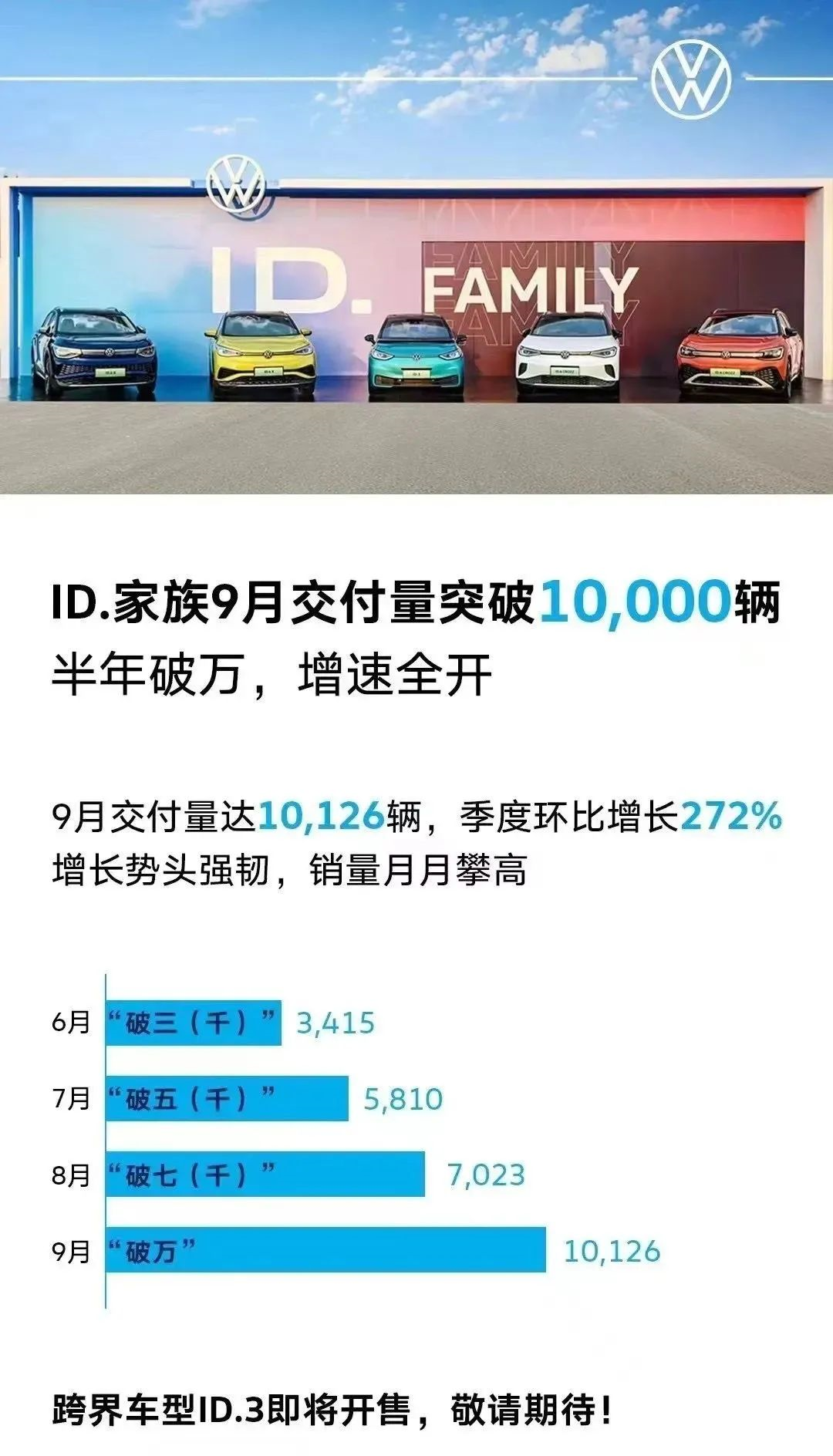
On September 24th, Volkswagen held a tech event in Beijing showcasing the ID. family, including ID.4, ID.6, and even the unreleased ID.3.
Taking this opportunity, let’s talk about Volkswagen’s MEB platform and the ID. family.
ID. Family & MEB Platform
Unlike other auto giants who started with “gasoline-to-electric” conversion when producing their first electric vehicle, Volkswagen chose to use an exclusive platform to build electric vehicles from the beginning, which took courage when most companies were uncertain about the direction of new energy vehicles.
An exclusive platform can maximize the advantages of electric vehicles: short front and rear overhang design, providing more space for battery placement, thereby achieving better performance in mileage. At the same time, it can also provide more space for passengers. The battery layout on the bottom also brings a lower center of gravity and better handling… the benefits are numerous.
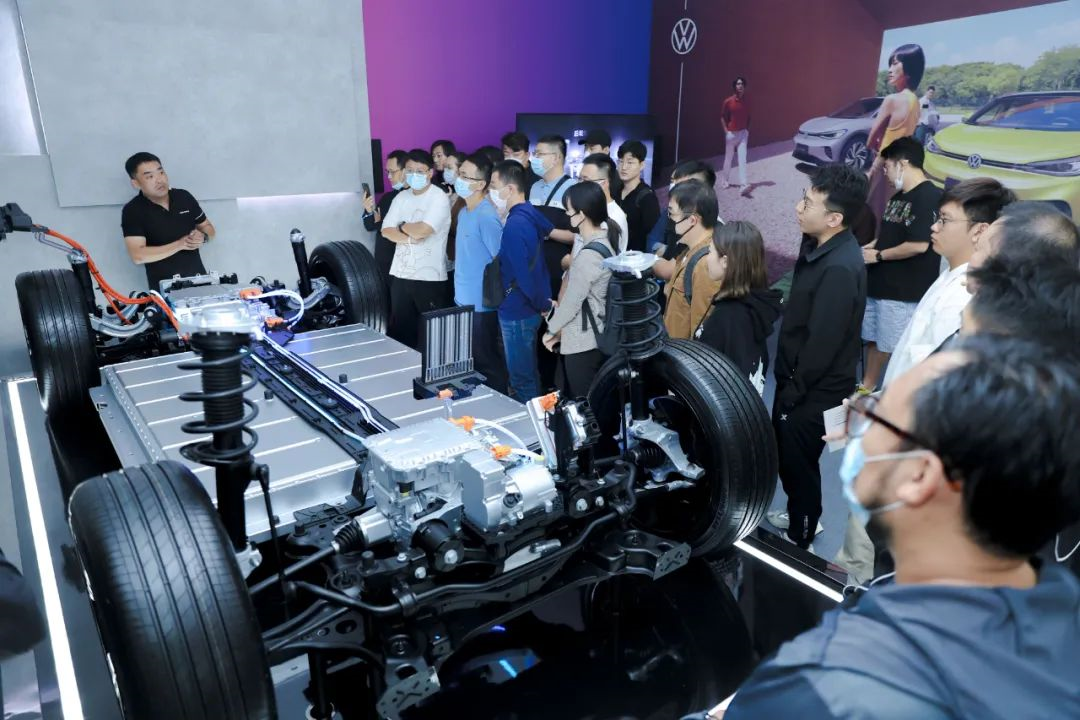
In fact, on the ID. family, we can already see the advantages brought by this platform.
The short front and rear overhang design provides more space for passengers. The battery can be flexibly arranged according to the needs of mileage (currently supporting battery capacities of 55 kWh, 65 kWh, 84.8 kWh, etc.). The battery layout on the bottom also brings a lower center of gravity and better handling.
Through an exclusive modular platform, multiple pure electric vehicle models can use the same components for large-scale production.
I don’t think I need to explain this too much. You can clearly see the benefits of this platformization. The following picture shows the ID. family that has already gone into production. Let’s take a look:
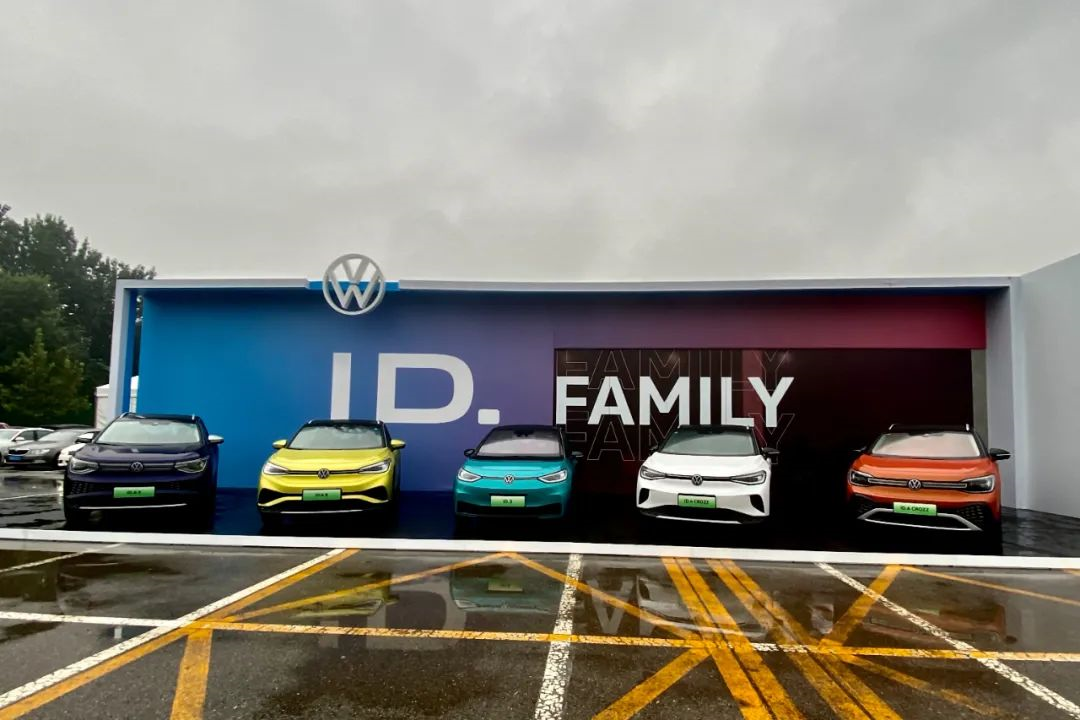
After switching to the new platform, the ID. family’s design also has a very clear self-identity, with a more rounded overall design (PS: I personally quite like this design style).In the interior, there is also a similar “nesting doll” design as in the exterior. Volkswagen has added many skills in intelligence this time: there are many touch-based interactions used in the cabin, including tapping, sliding, and multi-touch. Touch controls are available for the center console, air conditioning, multifunction steering wheel, ceiling light, and panoramic sunroof.
In addition, there are intelligent interactive breathing lights ID. Light and IQ. Light intelligent matrix headlights, which can interact with users through lighting.
Furthermore, the high-end models also offer AR-HUD augmented reality head-up display, further enhancing the overall vehicle’s sense of technology and driving experience.
The inclusion of these features significantly increases the car’s technological attributes and convenience, and the learning curve is not high.
Of course, there is also the L2 assisted driving system, which, from my previous experience, performed well and was stable. It is a useful driving assistance system.
According to official information, the ID. family will begin to push OTA upgrades in the first quarter of next year, which is somewhat exciting.
On the day of the event, we also conducted a brief test drive on the track and on the road.
The performance of ID.4 and ID.6 is very good. Although the body of ID.6 is larger, it does not actually feel that way after driving it. The steering wheel is lighter and more user-friendly for female users. It also handles well on bumpy roads.
What impressed me the most was its large steering ratio, which is really practical for everyday U-turns, sharp turns, and parking. I think you really need to experience it to feel it. This also indirectly demonstrates the clever use of this pure electric platform.The operation of ID.4 is very flexible, especially after the body has shrunk a circle. It still feels a lot like a fuel car, and the acceleration is not abrupt. The chassis is also tuned comfortably. I have to say that in this aspect, as a well-established car manufacturer, Volkswagen has a deep heritage. Unfortunately, the test drive time is too short, and I didn’t get enough of it.
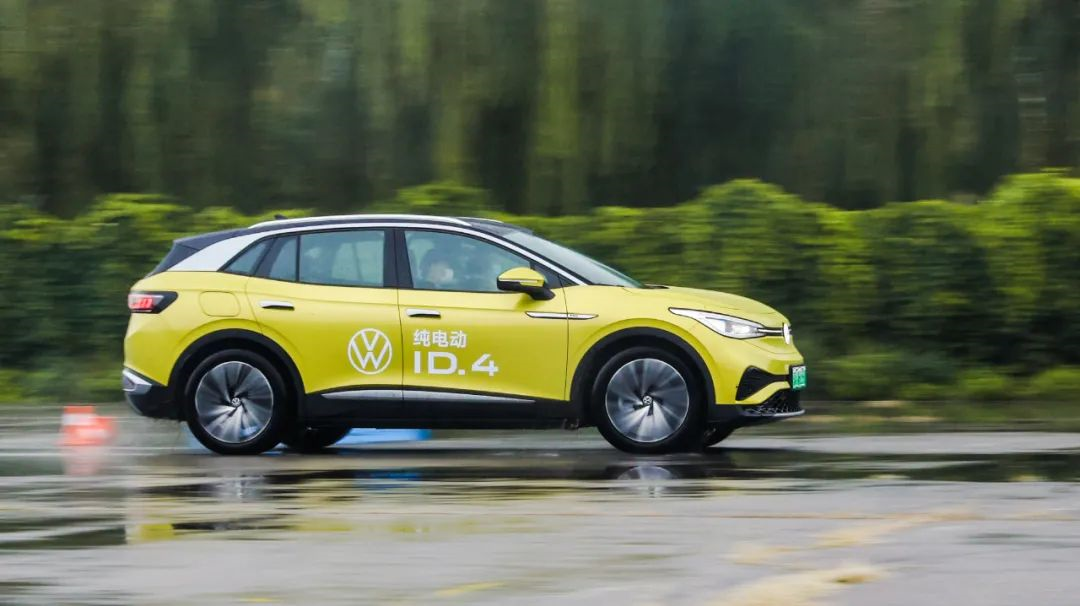
This surprised me a bit: if the handling of ID.4 is already like this, then how about ID.3 that is even smaller? Unfortunately, ID.3 did not show up, so I can only keep some thoughts for now.
Conclusion
Personally, I think Volkswagen has done a good job with these electric products: building a pure electric platform, excellent quality, and product strength which are all comparable to fuel cars. They are very suitable for users who are transitioning from the fuel car era to the electric car era.
Let me give an example: Volkswagen has set two gears: D gear and B gear when driving forward. D gear is almost the same as driving a fuel car with almost no energy recovery when the brake is released, but B gear can recover energy once the foot is off the accelerator (PS: When the brake is applied, there will also be energy recovery).
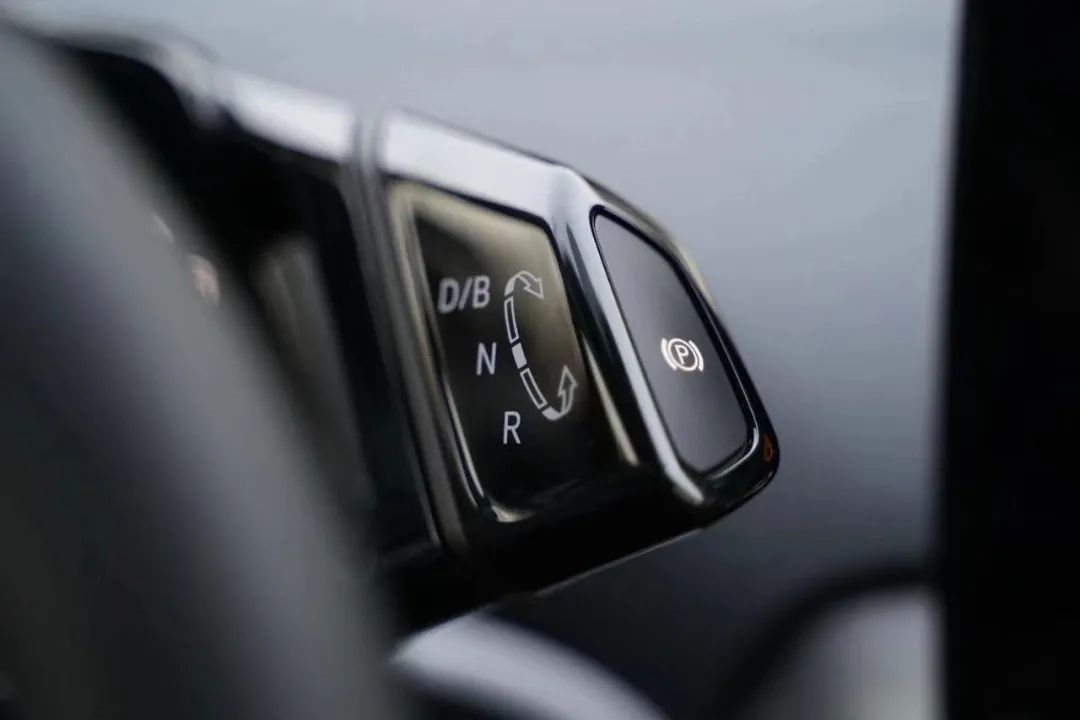
This design is very obvious, meeting the needs of users who are accustomed to electric vehicles with energy recovery, while also taking into account users who are transitioning from the fuel car era, putting the option of whether to turn on energy recovery into the users’ hands. It shows Volkswagen really thinks about users’ needs.
In addition to the product level, the ID. series is also very sincere in pricing. The new energy era has reshaped the brand’s cognition, including the price system. Volkswagen is also very aware of this and has not completely followed the old rules of the fuel car era, but quickly learned new rules. This is very commendable.
Another interesting phenomenon is that there are two opposite demands for ID. The sales of the larger ID.6 have increased, while the user expectations for the smaller ID.3 are very high because even though it is small, the space is not bad, and the price is expected to be in the range of 150,000 to 200,000 CNY, which is a highly competitive market. A large number of users who want to buy a branded electric car are watching closely.
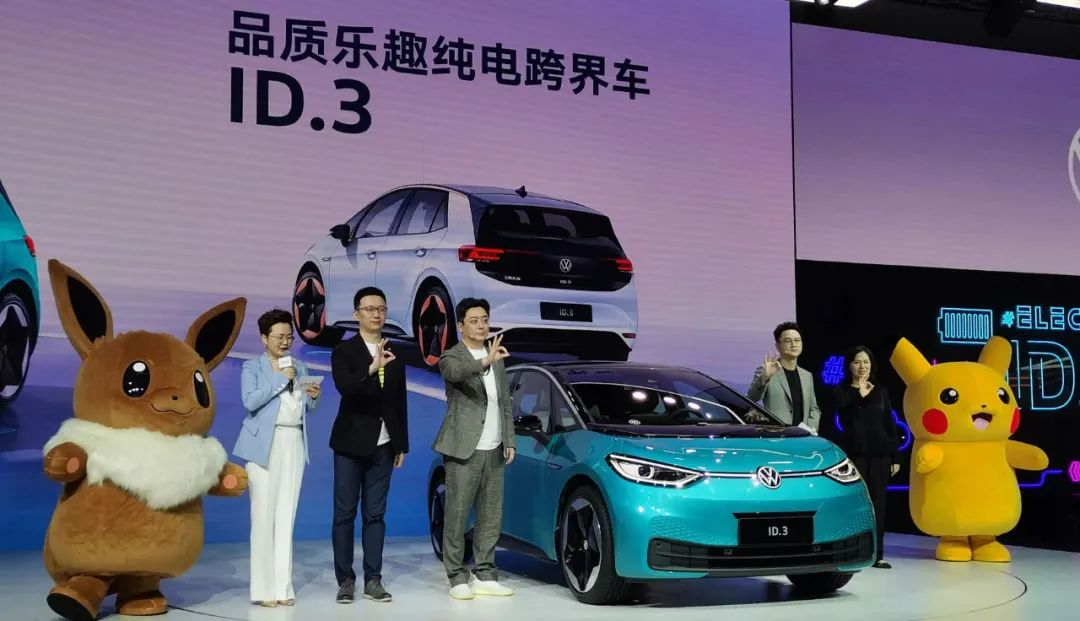
I am also very looking forward to the market performance of ID.3. After the National Day holiday, the price of ID.3 should be announced soon. Let’s wait and see.
This article is a translation by ChatGPT of a Chinese report from 42HOW. If you have any questions about it, please email bd@42how.com.
